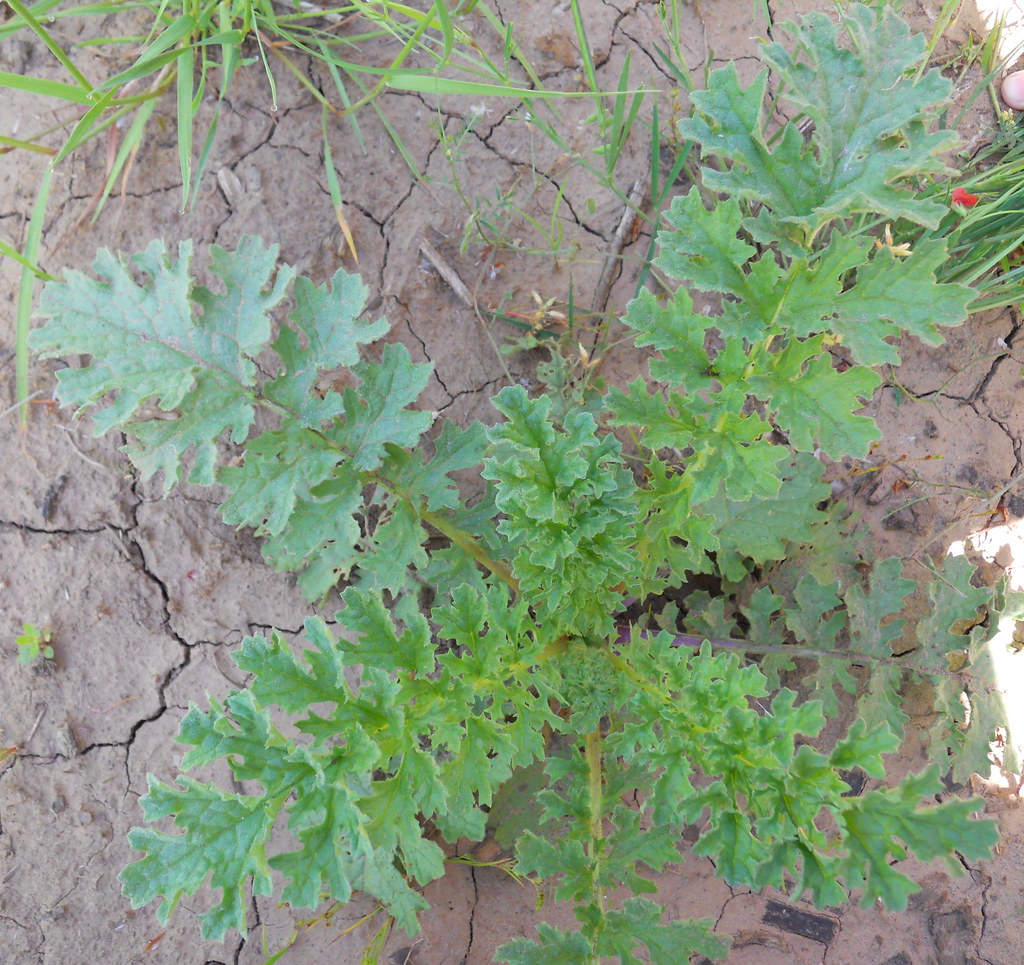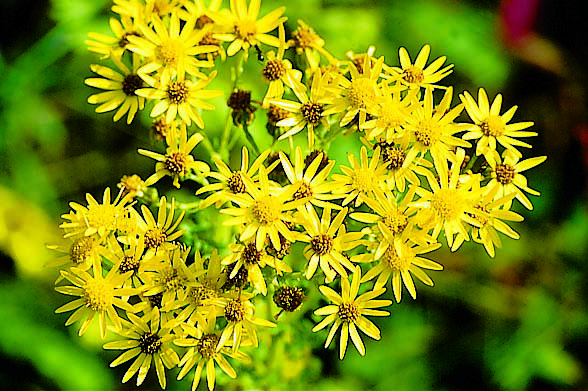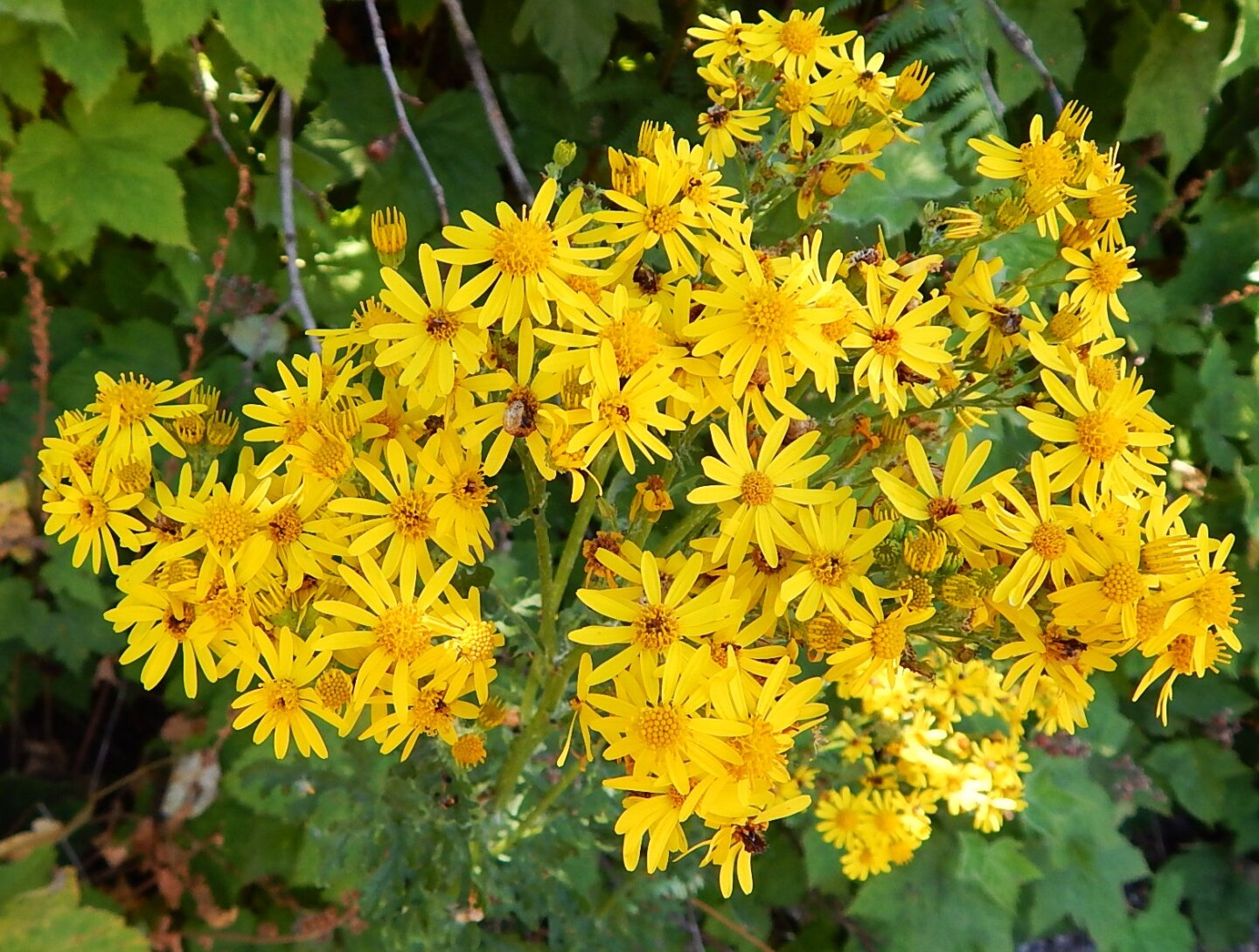Senecio jacobaea
Description
- Toxic biennial to short-lived perennial growing 0.3 m to 1.2 m tall.
- Bright yellow flowers are daisy-like with 10-15 petals each, arranged in a flat cluster at the top of the stem.
- During the first year of growth, tansy ragwort grows as rosette with a purple-green stem and dark green, ruffled leaves. In the second year of growth, leaves grow alternately and are whitish-green on the underside. Leaves are deeply lobed with uneven edges, giving it a very ruffled appearance.

Introduction and spread
- Native to Europe, Asia and Siberia.
- It was first seen in North American in seaports and has since spread via contaminated hay.
- Reproduces mainly by seed but can reproduce from root or stem fragments. Seeds have a pappus (fine hair attached to seed) and are carried by the wind, leading to rapid spread of tansy ragwort infestations.
- Depending on depth of soil, seeds may be viable up to 15 years. Soil disturbance will cause seeds to germinate.
Consequences of invasion
- Tansy ragwort is toxic to livestock and wildlife and can lead to liver damage. Milk produced by affected cows and goats can contain toxins.
- Honey bees sometimes consume alkaloids in tansy ragwort that result in bitter, off-coloured honey that is undesirable to consumers.
- This species can invade agricultural land and degrade crop productivity and reduce food sources for livestock.
Status in the CKISS region
- Tansy ragwort is currently classified as Eradicate on the CKISS Annual Priority List.
- Tansy ragwort is present in the region with very limited distribution, so eradication is feasible. Please report findings immediately.
- CKISS is taking steps to monitor and manage tansy ragwort.
- To learn more about how CKISS classifies and manages invasive species, see our Invasive Species Priority Lists page.
Integrated pest management options
- Become PlantWise and learn about Grow Me Instead. Select alternative, non-invasive plants.
Prevent
- Small infestations can be treated by hand pulling. Entire root system must be removed and repeated treatments may be necessary.
- Repeat mowing can be effective but must be done before flowering to prevent seed production but must be followed up with removal of root system.
- Incomplete or substandard removal can stimulate root production and encourage plant to regrow as a perennial, coming back year after year.
Mechanical
- A defoliating moth (Tyria jacobaeae), seedhead fly (Hylemya seneciella also known as Botanophila seneciella), root feeding beetles (Longitarsis flavicorni, Longitarsis jacobaeae), and root crown feeding moth (Cochylis atricapitana) have been effective in controlling tansy ragwort in the Fraser Valley.
- A few different species of biological agents have been identified and deployed in the Fraser Valley.
Biological
Additional resources


